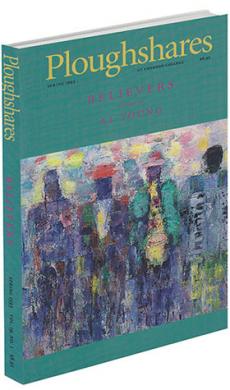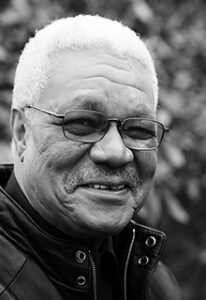rev. of My Body to You by Elizabeth Searle
My Body to You
Stories by Elizabeth Searle. Univ. of Iowa Press, $22.95. 1992 Iowa Short Fiction Award Winner, selected by James Salter. Reviewed by James Carroll.
Elizabeth Searle has written these stories in fire. They are thirteen searing portraits of women or girls whose lives have taken them to the extreme of feeling — of loss, discovery, sensuality, self-hatred, passion, loneliness, and love.
The title of the collection offers a key to what distinguishes this work from other fiction. Each character Searle presents is so thoroughly rendered
in her body that, to use a phrase from a separate, although not unconnected context, the word becomes flesh. Searle is not concerned with the mere appearance of her characters, or even the outer manifestations of inner states that conventional descriptions of gesture, physique, speech, or movement usually offer. This writer manages time and again to bring the reader into the very selves of her characters, obliterating the usual, Manichean division between the spiritual and the physical. “Our Bodies Ourselves” is the title of a famous feminist manifesto, but the phrase captures the spirit and meaning of these stories.
The title story, “My Body to You,” concerns a young woman who, in her wish to love a man who cannot reciprocate, seeks in effect to leave her body by denying its needs. Because their physical love is impossible — he is gay — she will give him her self in the new state of a body freed from gravity, from the laws of the earth which keep her alone. In showing how the radical flight from the physical turns back on itself as the physical becomes all, this achingly beautiful story achieves in the end a pristine spirituality of desire.
In the story “What to Do in an Emergency,” a recently divorced woman finds herself as a temp in a home for special-needs people. Searle gives us the home itself so vividly it becomes the body of the group living in it. “The uncovered bread dough had swollen. Bobbie Ann’s stomach stirred at its sweet yeasty smell. It’s flesh-colored curve nearly overflowed the bowl.”
In “Number 8,” a tour de force of restraint, the entirely unavailable world of an autistic boy becomes stunningly real not only for Ann, who becomes entranced with him, but for the reader,
through her. Her profoundly physical perception throws her back to a key moment. “Dinosaurs have part of their brains in their tails. So which is the head? Ann had demanded. Wide awake for the first time ever in grade school science class, waving her hand at the teacher urgently.” This moment of a girl’s sudden — and solitary — awakening to the reversal of all she’d been taught captures the feel of what Elizabeth Searle has accomplished in this fine collection. She is waving her hand for all to see — a deft, writerly hand that works magic on the page. Searle’s subject is the way women — the way all humans — press out from their bodies to connect, connect, connect, without ever thinking that is what we do, without knowing, really, which end is the head, and which the tail. Searle rivets and reveals, driving home in more than a dozen ways the hard truths — and the good news — that our brains are in both parts of us, that our bodies
are the connection.
James Carroll is the author of eight novels, most recently Memorial Bridge.
His new novel, Brothers,
will be published next winter. He teaches writing at Emerson College.

